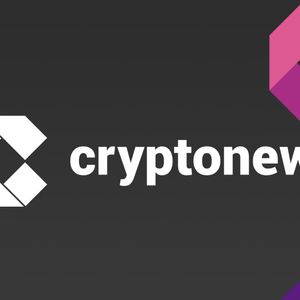Summary TeraWulf is a low-cost Bitcoin miner with a 70% YTD stock increase, outperforming peers despite the Bitcoin halving event's cost escalation. The company has a strong financial position with zero debt, a $104.1 million cash buffer, and plans for significant hash rate expansion. TeraWulf's low-cost energy infrastructure supports diversification into high-performance computing (HPC) and AI, promising robust growth and reduced earnings volatility. With a forward EV/EBITDA of 9.7 and a bullish outlook, TeraWulf offers a 30%-50% upside potential over the next 24 months. Investment Overview It’s been a reasonably good year for Bitcoin ( BTC-USD ) with the digital asset trading above $60,000 with returns of 36% for year-to-date. The same is not the case with most Bitcoin miners. With the halving event translating difficulty in Bitcoin mining, cost escalation has negatively impacted mining stocks. As an example, Riot Platforms (RIOT) stock has plunged by 54% for year-to-date. Similarly, MARA Holdings (MARA) has declined by 32% for the same period. There are multiple other examples of Bitcoin mining stocks underperforming during the year. Among the few exceptions, TeraWulf (WULF) deserves mention and consideration for exposure. WULF stock has trended higher by 70% for year-to-date. Even after a significant rally, I remain bullish on the stock and I initiate coverage with a “Buy” rating. I believe that TeraWulf is positioned to survive, steady increase its hash rate capacity, and create value through diversification. This initiating coverage discusses these factors to elaborate on the bull thesis. It’s worth mentioning at the onset that aggressive rate cuts might be on the cards in the next 12 to 18 months. Expansionary policies would imply a relatively weaker dollar and would be positive for Bitcoin. After trading largely sideways in the last six months, the cryptocurrency might be poised for a breakout. This will support upside in TeraWulf stock as EBITDA margin expansion is likely. Low-Cost Bitcoin Miner With the Bitcoin halving event in April 2024, the cost to mine one Bitcoin has increased. Therefore, the starting point of the bull thesis is the mining cost for TeraWulf. This explains (to a large extent), the reasons for TeraWulf stock trending higher. For Q1 2024, TeraWulf mined 1,051 Bitcoin and the total cost of mining one digital asset was $29,647. For Q2 2024, the number of Bitcoin mined declined to 699. At the same time, the total cost to mine one Bitcoin increased to $41,587. The halving and an increase in network difficulty explain this trend, even after an increase in hash rate. Having said that, TeraWulf has guided for Bitcoin mining cost of $40,000 for the remainder of 2024. It’s still attractive considering the point that the digital asset is likely to trend higher in the coming quarters. Even if we look at things on a relative basis, TeraWulf is better than peers. For Q2 2024, the company reported adjusted EBITDA of $19.5 million and the EBITDA margin was 54.7% considering revenue of $35.6 million. For the same period, Riot Platforms and MARA Holdings reported an adjusted EBITDA loss. Bitfarms (BITF) reported positive adjusted EBITDA , but the margin was 28%. TeraWulf is therefore superior to peers, and it’s therefore not surprising that the stock is trending higher. Steady Mining Expansion Plans TeraWulf ended Q2 2024 with an operational hash rate of 8.8EH/s, which was higher by 80% on a year-on-year basis. The company intends to continue increasing its capacity, with a target of 13.3EH/s by the second half of 2024. Further expansion is planned in 2025. This will translate into healthy revenue and EBITDA growth if Bitcoin remains in an uptrend. To arrive at ballpark EBITDA estimates, let’s consider the chart below that gives the EBITDA/EH for TeraWulf and peers for Q2 2024. A key positive is that TeraWulf is ahead of peers, and this further underscores the view that the company is among the best low-cost miners. Investor Presentation August 2024 Additionally, Bitcoin averaged around $65,000 for Q2 2024. Assuming an average price of Bitcoin that’s 20% higher in 2025 is a good base-case scenario. It would imply that Bitcoin trades at an average price of $78,000 next year. Further, assuming that all other costs are equal, the EBITDA/EH for 2025 can be estimated at $2.9. By the end of the year, TeraWulf is likely to have a hash rate capacity of 13.3EH/s. If I assume the same as an average capacity for 2025, it would be conservative. However, let’s take a conservative estimate for potential EBITDA for 2025. With EBITDA/EH at $2.9 and an average capacity of 13.3EH/s, the average quarterly EBITDA is expected at $38.6 million. This would imply an annual EBITDA potential of $155 million. As a bear-case scenario, I am assuming that EBITDA/EH remains steady at $2.4. Even this would imply an EBITDA potential of $128 million for 2025. Further, if Bitcoin surges above $100,000 in the coming quarters, the annual EBITDA is likely to be more than $200 million. The point I want to make is that TeraWulf is positioned for healthy revenue and EBITDA growth. With upside in cash flows, the company will have high flexibility to invest in hash rate capacity expansion and diversification. Another positive to note is that the Bitcoin miner repaid $30.2 million in debt in Q2, 2024. Further, in July 2024, the company pursued significant repayment of $75.8 million in debt. With a zero-debt balance sheet and a cash buffer of $104.1 million as of Q2, 2024, TeraWulf has high financial flexibility. An important point to note is that TeraWulf has a “No Hold” strategy for Bitcoin. With the likelihood of the cryptocurrency trending higher in the coming quarters, the company is positioned to benefit. Power Infrastructure Will Support Diversification I believe that the rally in TeraWulf stock for year-to-date has been driven by two factors. First, there is clear visibility for healthy EBITDA margin even after Bitcoin halving. This would potentially imply continued increase in financial flexibility for growth plans. Second, TeraWulf has plans to deploy its low-cost energy infrastructure for high performance computing (HPC) or AI applications. The second factor is likely to be a major catalyst for TeraWulf stock trending higher in the next 24 months. Let’s first talk about the company’s power infrastructure. At the Lake Mariner Facility, the low-cost is primarily due to hydropower, with the site being 35 miles from Niagara Hydro. This facility is 91% zero-carbon power. Further, the Nautilus Cryptomine Facility is directly connected to a nuclear power plant and is 100% zero-carbon power. An obvious advantage is the fact that the green energy is being utilized for Bitcoin mining. At the same time, the region has a significant energy surplus. To put things into perspective, the company has 245MW that’s currently operational and deployed across these two sites. TeraWulf believes that it can increase its capacity by an additional 350MW. Investor Presentation August 2024 This additional capacity can be used for Bitcoin mining or deployment towards HPC/AI. In my view, it’s a good decision to consider diversification. According to David Foley, managing partner at Bitcoin Opportunity Fund, “the artificial intelligence crowd is willing to pay three or four times what Bitcoin miners were paying last year” for electricity. There is a low of business sense in utilizing excess power for HPC or AI. Further, as the data below indicates, having surplus power is a big advantage as there is a potential supply demand mismatch. Company Presentation August 2024 TeraWulf is well positioned to benefit with ownership of low-cost power infrastructure. As the chart below indicates, the company is targeting significant capacity to be energized towards the end of 2025 and beyond. Investor Presentation August 2024 This will set the stage for robust growth in 2026 and potentially in 2027. Therefore, the next few years are likely to be positive for TeraWulf in terms of top-line and EBITDA upside. With a clean balance sheet, there is ample flexibility to invest in business diversification. Risk Factors to the Thesis Execution Risk (Low): Between 2022 and the first half of 2024, TeraWulf has expanded its hash rate from 0.3EH/s to 10.2EH/s. During the same period, the company operationalized 245MW of power infrastructure. The execution has been steady, and I believe that the company is likely to meet its 2025 target. Financial Risk (Low): As of July 2024, TeraWulf has repaid all debt. With a strong balance sheet, the company’s financial risk is low. Further, with the possibility of Bitcoin trending higher, I expect healthy cash flows that’s backed by capacity expansion. Bitcoin Price Volatility Risk (Medium): It’s worth noting that Bitcoin traded at highs of $73,800 in March 2024. There has been a subsequent correction and sideways trade. With the cryptocurrency, there is always a risk of high volatility. However, I believe that this risk is mitigated to some extent by the point that aggressive expansionary monetary policies are likely. This can potentially be a trigger for a renewed rally in the digital asset. Diversification Risk (Low): I believe that the company’s impending diversification towards HPC and AI is likely to yield positive results. Goldman Sachs estimates that data center power demand will grow 160% by 2030. Further, between 2022 and the end of the decade, the highest incremental demand growth will be from data centers. I therefore believe that the diversification is in the right direction and reduce the volatility in earnings for the company. Concluding Views I had estimated earlier that TeraWulf is likely to report a base-case EBITDA of $155 million for 2025. With zero-debt and the company’s estimate of fully utilizing the cash buffer by the end of 2025, the current market capitalization ($1,510 million) can be considered for enterprise value. The forward EV/EBITDA is therefore 9.7. If we look at the sector median , the EV/EBITDA ((FWD)) is 14. Therefore, there is a clear valuation gap with an upside potential of 30% to 50% from current levels considering an investment horizon of 24 months. I believe that the sector median understates the valuation gap for two reasons. First, TeraWulf is a low-cost miner and has a superior EBITDA margin as compared to peers. Second, TeraWulf is diversifying into HPC and that’s likely to reduce the company’s earnings volatility as compared to a pure-play Bitcoin miner. I must add here that consensus estimates for 2026 indicate stellar earnings growth. That’s likely to be on the back of HPC/AI deployment. This will add to the bullish outlook for TeraWulf stock. Seeking Alpha Consensus Estimates I therefore believe that TeraWulf is worth considering for the next 24 months. The stock is likely to remain in an uptrend and can create significant value.

















![[LIVE] Crypto News Today: Latest Updates for July 11, 2025 – Bitcoin Races Towards $120K, ETH Nears $3K Amid Bullish Frenzy [LIVE] Crypto News Today: Latest Updates for July 11, 2025 – Bitcoin Races Towards $120K, ETH Nears $3K Amid Bullish Frenzy](https://resources.cryptocompare.com/news/52/48007563.jpeg)

